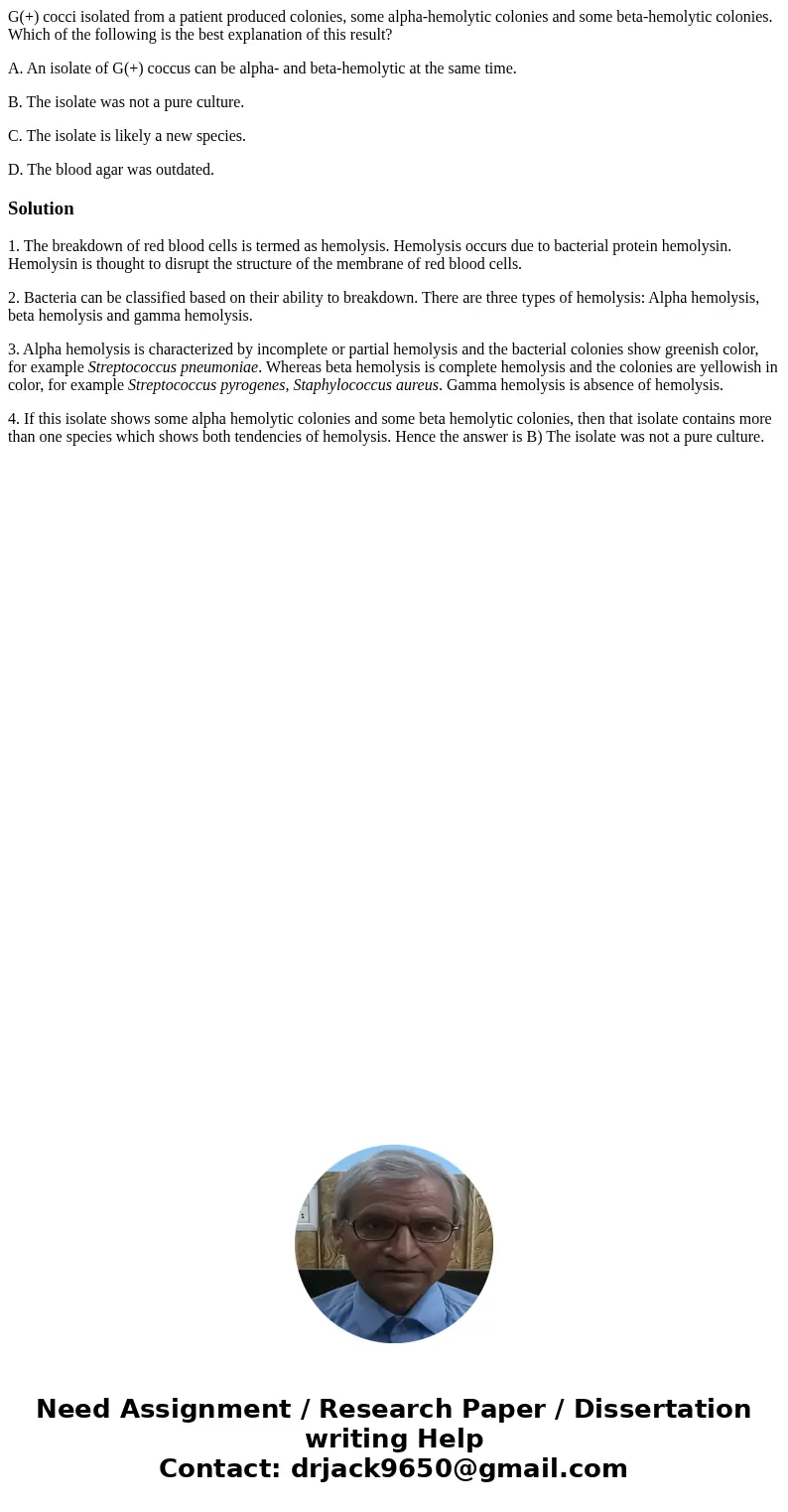G cocci isolated from a patient produced colonies some alpha
G(+) cocci isolated from a patient produced colonies, some alpha-hemolytic colonies and some beta-hemolytic colonies. Which of the following is the best explanation of this result?
A. An isolate of G(+) coccus can be alpha- and beta-hemolytic at the same time.
B. The isolate was not a pure culture.
C. The isolate is likely a new species.
D. The blood agar was outdated.
Solution
1. The breakdown of red blood cells is termed as hemolysis. Hemolysis occurs due to bacterial protein hemolysin. Hemolysin is thought to disrupt the structure of the membrane of red blood cells.
2. Bacteria can be classified based on their ability to breakdown. There are three types of hemolysis: Alpha hemolysis, beta hemolysis and gamma hemolysis.
3. Alpha hemolysis is characterized by incomplete or partial hemolysis and the bacterial colonies show greenish color, for example Streptococcus pneumoniae. Whereas beta hemolysis is complete hemolysis and the colonies are yellowish in color, for example Streptococcus pyrogenes, Staphylococcus aureus. Gamma hemolysis is absence of hemolysis.
4. If this isolate shows some alpha hemolytic colonies and some beta hemolytic colonies, then that isolate contains more than one species which shows both tendencies of hemolysis. Hence the answer is B) The isolate was not a pure culture.

 Homework Sourse
Homework Sourse